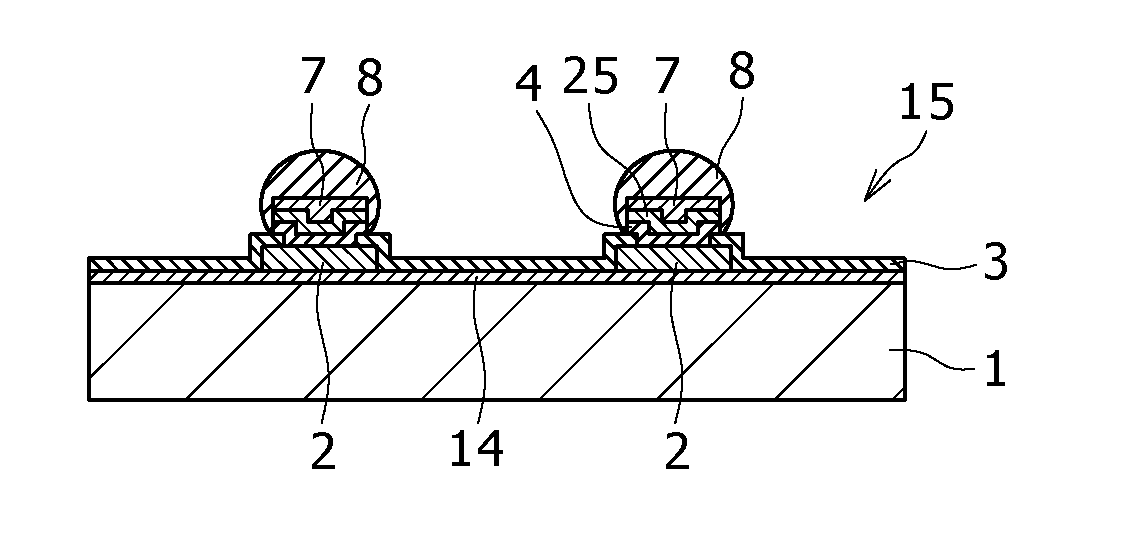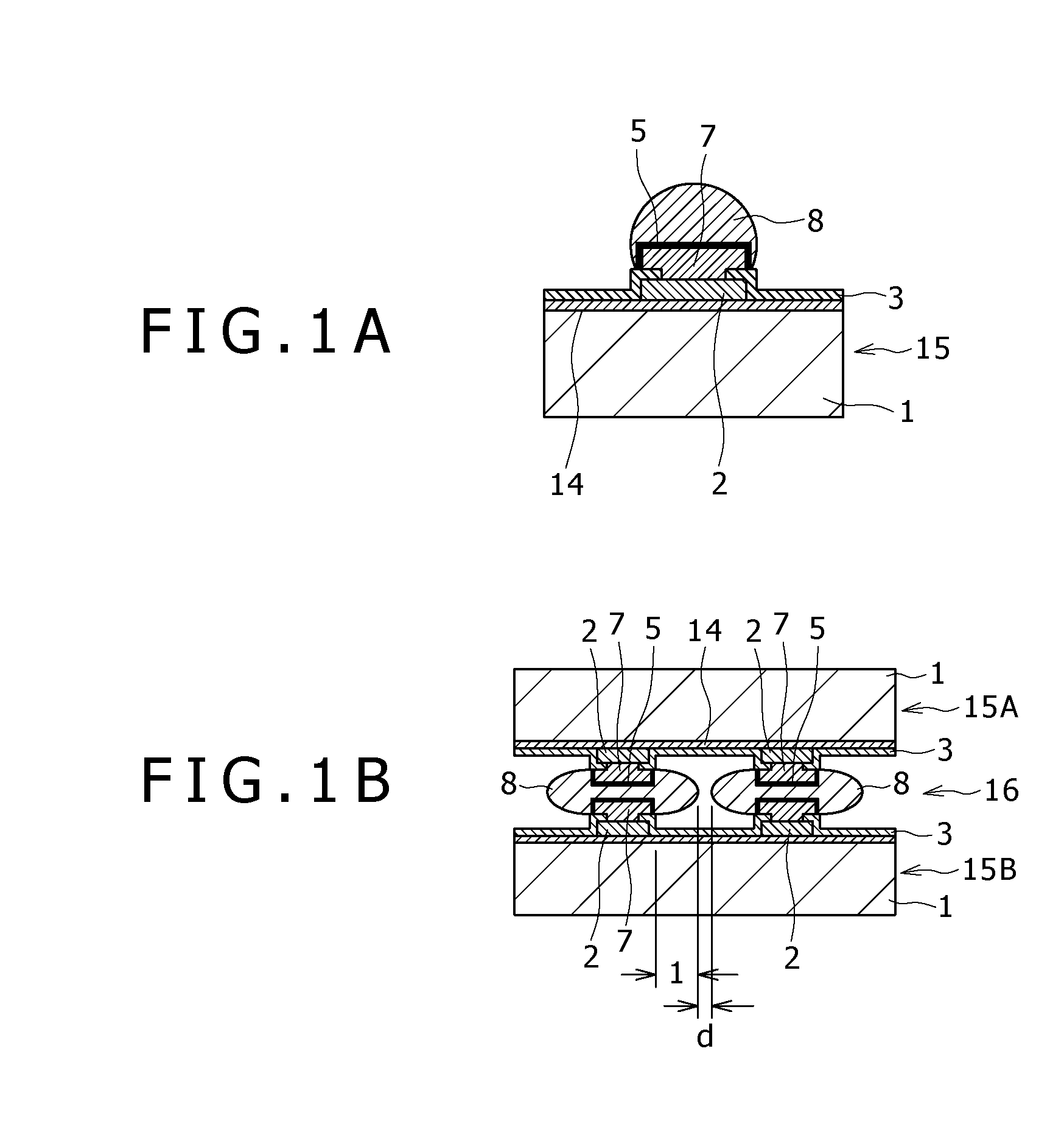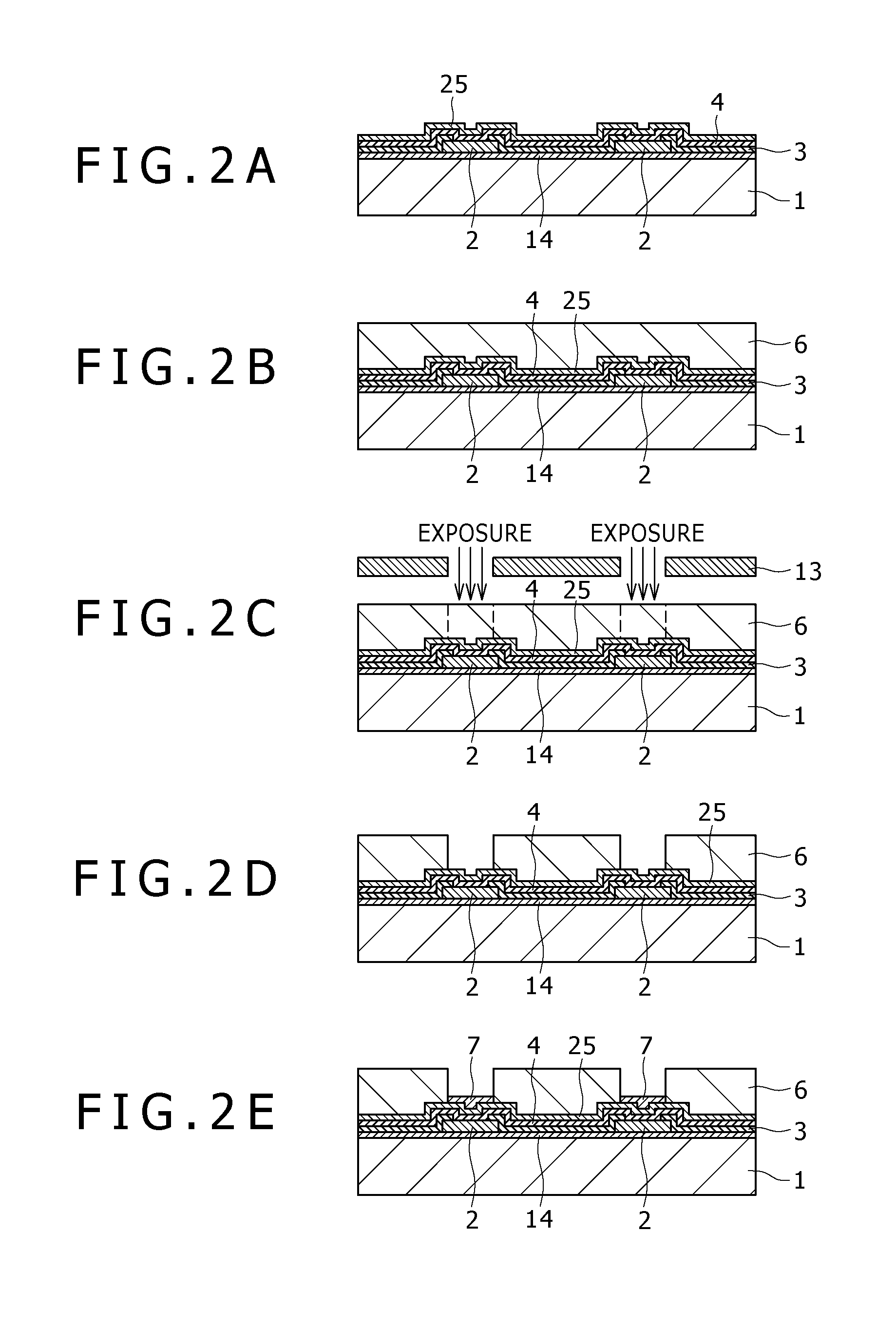Semiconductor device, chip-on-chip mounting structure, method of manufacturing the semiconductor device, and method of forming the chip-on-chip mounting structure
a semiconductor device and mounting structure technology, applied in the direction of semiconductor devices, semiconductor/solid-state device details, electrical devices, etc., to achieve the effects of preventing short-circuit, preventing electromigration, and enhancing yield and reliability of bonding
- Summary
- Abstract
- Description
- Claims
- Application Information
AI Technical Summary
Benefits of technology
Problems solved by technology
Method used
Image
Examples
first embodiment
1. First Embodiment
[0051]FIGS. 1A and 1B schematically show a structure of a semiconductor device (semiconductor chip) 15 according to a first embodiment of the present invention.
[0052]The semiconductor device 15 is composed of a semiconductor substrate 1 made of Si or the like, a pad electrode 2 made of aluminum, an insulating film 14 (corresponding to the insulating film 64 previously stated in the related art), a protective film 3 (corresponding to the protective film 64 previously stated in the related art), a copper (Cu) electrolytic plating layer 5, a Ni electrolytic plating layer 7, a Sn system solder bump electrode 8, and the like. Also, an Under Bump Metal (UBM) layer is composed of the Ni electrolytic plating layer 7 and also the Cu electrolytic plating layer 5. A size of the solder bump electrode 8, for example, may be equal to or smaller than 30 μm in diameter and equal to or smaller than 15 μm in height.
[0053]As shown in FIG. 1A, it is important for the semiconductor de...
second embodiment
2. Second Embodiment
[0071]FIGS. 3A to 3I show a semiconductor device according to a second embodiment of the present invention, and processes for manufacturing the semiconductor device of the second embodiment, respectively.
[0072]Firstly, similarly to the case of the description given with reference to FIGS. 4A to 4H, the insulating film 14, the pad electrode 2, the protective film 3, the Ti sputtering layer 4, the Cu sputtering layer 25, and the Ni electrolytic plating layer 7 are formed in this order on the semiconductor substrate 1.
[0073]Next, as shown in FIG. 3B, the Cu sputtering layer 25 is selectively etched away with the Ni electrolytic plating layer 7 as an etching mask except for a portion of the Cu sputtering layer 25 underlying the Ni electrolytic plating layer 7.
[0074]Next, as shown in FIG. 3C, the Ti sputtering layer 4 is selectively etched away with the Ni electrolytic plating layer 7 as an etching mask except for a portion of the Ti sputtering layer 4 underlying the ...
PUM
 Login to View More
Login to View More Abstract
Description
Claims
Application Information
 Login to View More
Login to View More - R&D
- Intellectual Property
- Life Sciences
- Materials
- Tech Scout
- Unparalleled Data Quality
- Higher Quality Content
- 60% Fewer Hallucinations
Browse by: Latest US Patents, China's latest patents, Technical Efficacy Thesaurus, Application Domain, Technology Topic, Popular Technical Reports.
© 2025 PatSnap. All rights reserved.Legal|Privacy policy|Modern Slavery Act Transparency Statement|Sitemap|About US| Contact US: help@patsnap.com



